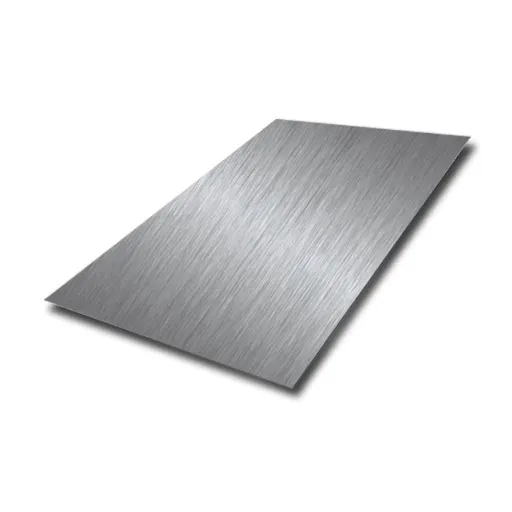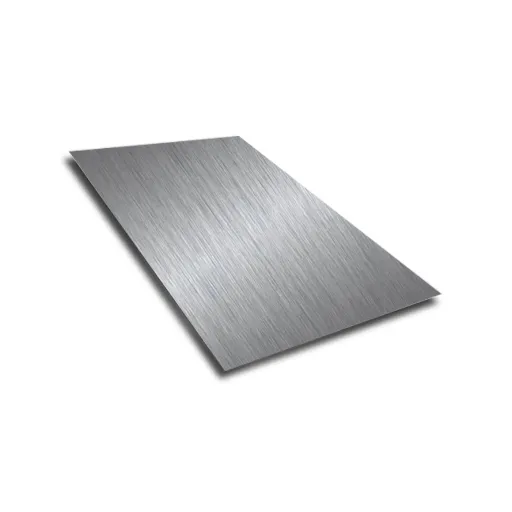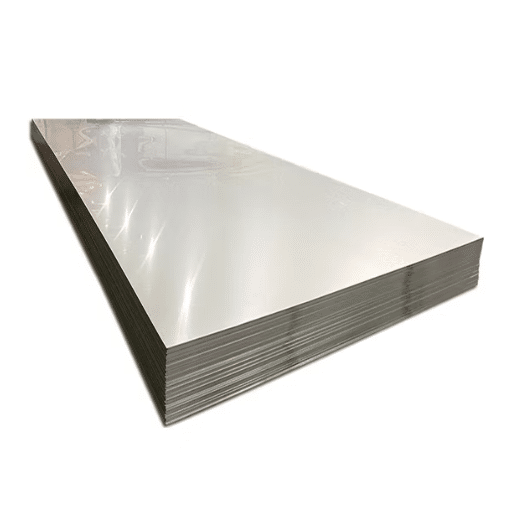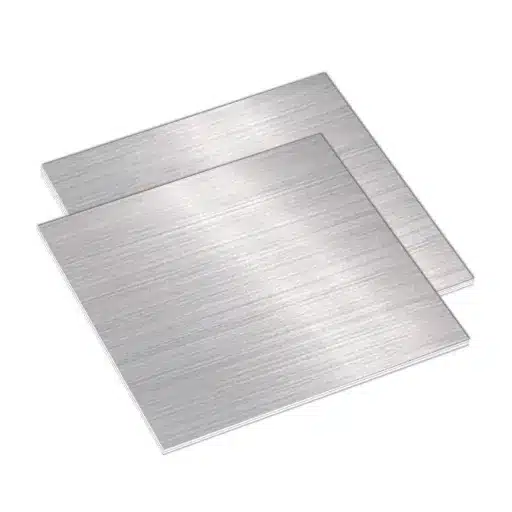Stainless steel bar stock is a very versatile material and playing an essential role in many industries and applications. Prior to the virtues of hardness, corrosion resistance, and pleasing aesthetics, the stainless steel bar stock is now being used by manufacturers, builders, and engineers around the world. This article will explain the different types of stainless steel bar stock, how they are used, and what benefits each provides. Whether designing a structural project, choosing materials for manufacturing, or simply looking for solutions for tough environments, knowing about stainless steel bar stock will surely lead to better-informed decisions that weigh between performance, cost, and sustainability.
Understanding Stainless Steel Bar Stock
What is Stainless Steel Bar Stock?
Stocks of stainless steel bars are solid and versatile metal bars made of stainless steel, a corrosion-resistant alloy composed of iron, chromium, and other constituents. These bars come in a wide array of cross-sectional shapes, including thick circular, flat, square, and hexagonal, to suit a variety of industrial and commercial purposes. Since stainless steel is highly resistant to rusting, staining, or corrosion due to environmental or chemical hazards, it finds application in almost all sectors.
Key Advantages
Durability: Since stainless steels have high tensile strength and can resist considerable wear and tear, they can be used for structural purposes or products that are exposed to life-threatening conditions.
Aesthetic Appeal: It tends to give an elegant perfection to designs, whether architectural, or in surgical equipment and kitchen utensils.
Anywhere from construction to manufacturing, automotive, and healthcare industries employ stainless steel bar stock. It spans courses from machining parts and fasteners to supporting heavy-duty frameworks. Properties such as resisting higher heat, providing more corrosion protection, or just being easier to fabricate are conferred upon these metals depending on the grade of stainless steel used, thereby further tailoring their application potential.
Types of Stainless Steel Bars
Stainless steel bars are categorized based on shapes and properties to suit different applications. The fundamental types of stainless steel bars are round bars, flat bars, square bars, hexagonal bars, and angle bars. Depending on the design of each, they serve a variety of industries.
Round Bars
These cylindrical shape bars find their use in processes such as machining, construction, and manufacturing. Since they can be easily machined and lend structural integrity, they are considered suitable for the manufacturing of fasteners, gears, and shafts.
Flat Bars
They have a rectangular cross-section. Flat bars are used across the spectrum of construction, structural framework, and fabrication projects. In applications where strength with a nice amount of longevity is required, flat bars serve the dual purpose of supplying that strength coupled with flexibility.
Square and Hexagonal Bars
The square bars have a uniform cross-section and are generally employed in decorative and engineering applications. Hexagonal bars, in turn, are made use of in fittings, machinery, and precision cutting due to their shape and wear resistance.
Each category of stainless steel bar is produced to meet desired mechanical and functional requirements, assuring dependability and versatility for the intended use.
Grades of Stainless Steel: T304 vs T316
T304 is cheaper and has general corrosion resistance, whereas the presence of molybdenum in T316 gives it better resistance against chlorides and tougher environments.
| Aspect | T304 | T316 |
|---|---|---|
| Cr Content | 18-20% | 16-18% |
| Ni Content | 8-10.5% | 10-14% |
| Mo Addition | None | 2-3% |
| Resistance | Standard | Enhanced |
| Price | Economical | Premium |
| Usage | Everyday | Specialized |
| Longevity | Moderate | Extended |
| Suitability | Indoor, mild | Harsh, marine |
Common Types of Stainless Steel Bars
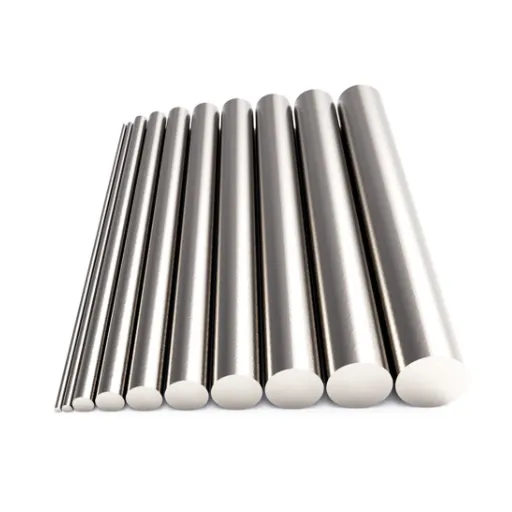
Round Stainless Steel Bars
Round stainless steel bars have become one of the more commonly made types because of their diverse applications. The cylindrical form of these bars stands as proof of uniform strength and durability throughout its surface. Usually made from stainless steel types such as T304 and T316, round bars exhibit very good corrosion resistance and may be used both indoors and outdoors.
These bars find themselves to be of utmost importance in constructions, manufacturing, and the automotive field. They go into the production of shafts, fasteners, and structural members, where utmost precision and strength are needed. T304 round bars serve a generalized use with respect to being tough and corrosion resistant, while T316 round bars, with their added molybdenum, are resistant to pitting and crevice corrosion, thus enabling their use in marine and chemical processing environments.
Selection Tip: Correct round stainless steel bars are selected by diameters, lengths, and grades to suit a specific nature of work. Due to machinability and weldability, these bars have been quite adaptable, so they fit well with design and mechanical requirements in various professional applications.
Flat Stainless Steel Bars
Flat stainless steel bars are versatile and durable components used in various industries. These bars are well known for being highly corrosion-resistant and having excellent tensile strength; hence they find applications in construction, automotive, and manufacturing projects alike. Primarily, such bars are used for making frames, brackets, and supports that take a heavy load from adverse environmental conditions while remaining in one piece—however, due to their flat surface, these may also be used in structural and decorative work where combining functionality with aesthetics is paramount.
Grade Comparison
- Grade 304: Considered an economical option, offering good corrosion resistance in an application of lesser demand.
- Grade 316: Provides better resistance to chlorides and severe chemicals and is hence an apt choice for marine environments and industries dealing with caustic substances.
Flat stainless steel bars are produced in various widths, thicknesses, and lengths to adapt to all possible needs in the project at hand. In this respect, one can say the bars keep a broader canvas for application, with the myriad artisan works or heavy-duty infrastructure components to choose from. Their added advantage makes them earning fame for better-durability, eco-friendliness, and ease of maintenance, thus being tougher choices in industries demanding or really emphasizing on performance and forever-standing reliability.
Square and Hexagonal Bars
Square and hexagonal bars are materials that find critical applications in manufacturing and construction, owing to their strength and an array of applications. A square bar has four equal sides, thus maintaining symmetry in structure; this feature is perfect, especially in applications that require a perfect balance and stability. Owing to their strength and the ease with which these bars are machined, manufacturers use them to make machine parts, frameworks, and fastenings. This straightforward geometric shape, because of its simplicity, finds several uses in designs that demand precision and neat alignment.
Square Bars
Four equal sides providing structural symmetry. Perfect for machine parts, frameworks, and fastenings requiring precision and neat alignment.
Hexagonal Bars
Six-sided design offering ergonomic grip. Ideal for nuts, bolts, fasteners, machinery, and decorative work with aesthetic appeal and tremendous strength.
Both square and hexagonal bars are fabricated from an assortment of materials like stainless steel, aluminum, and carbon steel per the application requirements. Now that manufacturing has matured, we are able to afford higher precision cutting and processing, which translates into increased efficiency with greatly reduced waste. Used separately or combined, these bars represent a winning combination of utility, strength, and flexibility. Structural work and advanced arts and crafts are among the many areas in which square and hexagonal bars still find vital use, placing them in the spotlight of 21st-century industries.
Applications of Stainless Steel Bar Stock
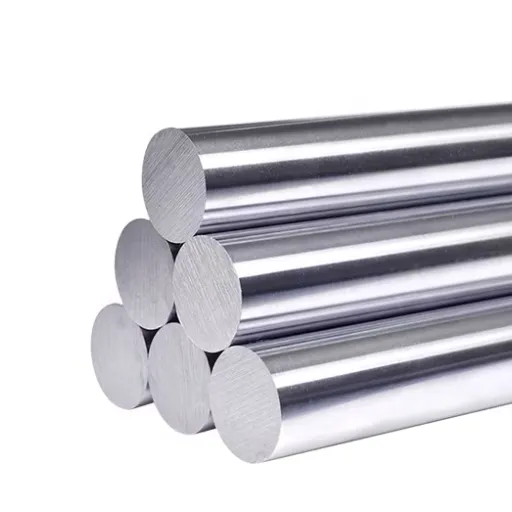
Industrial Uses of Stainless Steel Bars
Stainless steel bars are universal, durable, and corrosion-resistant materials used in various industrial applications. Below are five key industrial uses of stainless steel bars:
Construction and Infrastructure
For the construction industry, stainless steel bars serve to reinforce concrete and cast structural frameworks. Stainless steel bars are also used in bridge construction, buildings, and marine structures, given the nature of their working environments. Industry reports say that 35% of the stainless steel produced globally is used for construction.
Automotive Manufacturing
Stainless steel bars are used by automobile manufacturers for various components like exhaust systems, chassis parts, and fasteners. Strength and resistance to heat allow for safe and long-lasting vehicles. Several studies have linked stainless steel to fuel efficiency, and this is because it is very light.
Chemical and Processing Industries
Stainless steel bars find usage in chemical plants and processing facilities where corrosive environments are encountered. They are widely used in the fabrication of tanks, pipelines, and heat exchangers. The metal maintains the purity of chemicals by preventing reactions and thus lowers maintenance costs.
Food and Beverage Production
Cold-rolled stainless steel bars are widely used in the food and beverage industry for hygienic purposes. This application encompasses sanitary and easy-to-clean needs like mixing drums, conveyor systems, and storage containers. The food-grade stainless steel must conform to the stringent FDA regulations.
Energy and Power Generation
Stainless steel bars play an integral role in energy infrastructure, from wind turbines to nuclear power plants. They are ideally positioned to stand against extremes of pressure and temperatures in thermal boiler systems, turbine blades, and piping. The growing renewable energy sector has further enhanced demand for stainless steel in this area.
Industrial applicability is a perfect example of how bars help stainless steel to spur innovation and efficiency in diverse sectors.
Construction and Structural Applications
Concrete Structure Reinforcing
They confer resistance to tensile stress to concrete structures, thereby preventing cracking or failure over time.
Bridge Construction
Given their superior corrosion resistance, stainless steel bars are used in bridge construction so that the structures remain durable and maintenance costs remain low, especially in the humid or salty atmosphere.
Building Facades
These are considered sleek and elegant and are treated as a design element by modern-day architects for building exterior applications, where aesthetics and steel strength go hand in hand.
Support Systems
They are applied in load-bearing members such as steel beams, columns, and trusses, to install stainless steel bars that offer stability and longevity, particularly on impact zones.
Railings and Handrails
Very common in residential, commercial, and industrial establishments, stainless steel bars for railings, handrails, and other safety features provide sturdy, low-maintenance options.
Specialized Uses in Manufacturing
🚗 Automotive Components
Stainless steel bars are used in the manufacturing of exhaust systems, engine parts, and chassis components, conferring strength and resistance to extreme conditions in the automobile industry. Industry data estimated that around 12% of all stainless steel produced finds application in the automotive sector.
✈️ Aerospace Industry
A stainless steel bar endowed with precision engineering is indispensable in aircraft component manufacture landing gear, fittings, and engine components. It enables the achievement of high temperature and aerodynamic forces demands requirements withstanding.
🏥 Medical Equipment
These stainless steel bars are employed in the manufacture of surgical instruments, orthopedic implants, and medical devices. They meet strict hygiene and biocompatibility requirements in the healthcare industry. A study revealed that stainless steel constitutes more than 40% of the materials used to fabricate medical-grade tools.
🍽️ Food and Beverage Processing
The manufacture of processing machinery requires stainless steel bars along with storage tanks and systems of conveyors. They prove sanitary due to their corrosion resistance and hence do not hamper the quality of the products over a stretch of time.
⚗️ Chemical and Petrochemical Applications
Because of the extremely corrosive nature of chemicals, the stainless steel bars are used in the manufacture of vessels, pipelines, and industrial mixing machinery. Lifetime longer in highly corrosive environments makes them a cheaper option.
Benefits of Using Stainless Steel Bar Stock
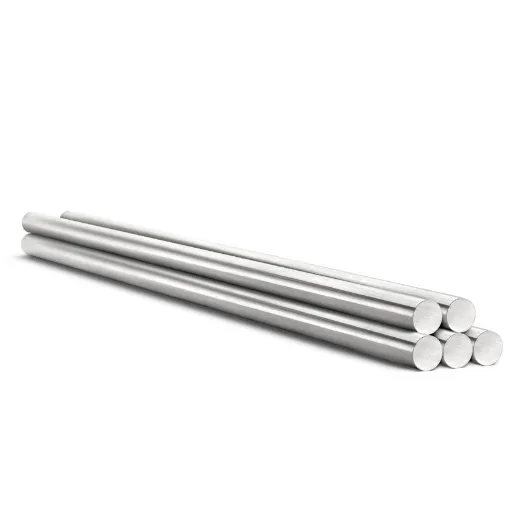
Corrosion Resistance
One of the most significant advantages of stainless steel bar stock is its exceptional corrosion resistance, making it ideal for challenging environments across multiple industries.
Marine Environments
The resistance to saltwater corrosion renders stainless steel an apt material for shipbuilding, now piers, and offshore platform construction.
Chemical Processing Plants
The material is suited to highly acidic or alkaline environments, such as chemical storage tanks or reaction vessels.
Food and Beverage Industry
For maintaining safety and reliability for a very long time, stainless steel is used to prevent contamination from corrosive cleaning agents.
Medical Applications
Having adverse effects on bodily fluids and sterilization processes, stainless steel is used for surgical tools and implants.
Building and Construction
When subjected to outdoor elements, stainless steel maintains its eye-catchiness for years, thus it can be used for architectural accents, structural components, and infrastructure projects.
Durability and Strength
Corrosion Resistance
The chromium content of stainless steel provides corrosion resistance by forming a protective oxide layer on the material surface against corrosion from moisture, chemicals, and saline atmospheres.
High Tensile Strength
Having a very high tensile strength, stainless steel can accommodate high force or pressure inherent in structural and industrial applications.
Temperature Resistance
With the ability to withstand very high operating temperatures without losing its properties, it is ideal for high-temperature service, such as in furnaces and exhausts.
Impact Resistance
Very good impact resistance allows stainless steel to absorb kinetic energy from any external force keeping its form unaltered and functional even under stress.
Longevity
The combination of a sturdy structure, abrasion resistance, and protective attributes ensures that stainless steel leads to longer serviceability and fewer replacement and repair interventions.
Versatility for Various Projects
Stainless steel is extremely suited for its utilization across all trades, given its unique combination of properties such as undue strength, durability, and resistance against certain shoulders. The five most common areas where stainless steel is considered extremely important are as follows:
🏢 Construction and Architecture
Stainless steel is widely used across various buildings for frameworks, roofing, and cladding, and offers both an aesthetic and structural advantage. The Chrysler Building is a fitting example for the use of stainless steel due to its durability and the contemporary look that it gave to the building.
🚙 Automotive Industry
Car manufacturers employ different varieties of stainless steels for corrosion-resistant applications so as to run against the constant and harsh exposure by weather: exhaust systems, trim, and structural components.
⚕️ Medical Equipment
This material is essential in manufacturing equipment like tanks and pipes, as it maintains hygiene by resisting stains and contamination.
⚡ Energy and Power Generation
Depending on the application, stainless steel is used in nuclear plants, solar panels, and oil-and-gas pipelines, requiring stability and corrosion resistance in harsh and demanding environments.
Key Insight: These very different applications emphasize its versatility and reliability and make stainless steel the backbone for several thousands of projects and industries.
Emerging Trends in the Stainless Steel Bar Market
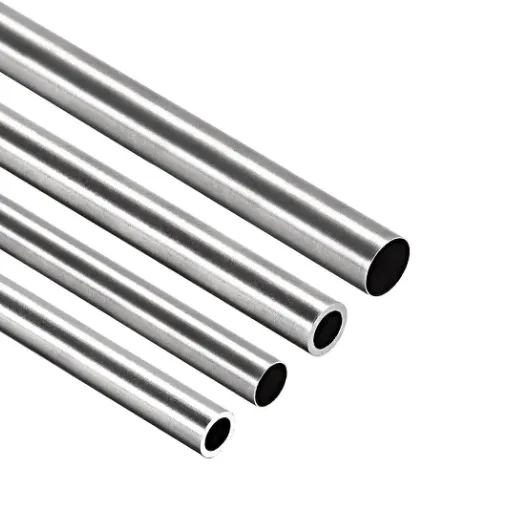
Innovations in Stainless Steel Bar Products
Advanced Alloy Composition
When I analyze any innovation in stainless steel bar products, the first one is alloy composition. The present research thrust focuses on developing alloy variations which bestow strength, resistance to corrosion, and durability. These evolutions have in fact catered to the needs of settings or industries where higher-level performance is required under extreme conditions, such as aerospace, energy, and marine applications.
Sustainable Manufacturing Processes
A great pact in stainless steel production has been wrought by the incorporation of sustainable manufacturing processes. I have perceived that these days, the manufacturers are more and more inclined to adopt processes reducing energy consumption and emissions, and thus considering recycling in the picture. This has placed stainless steel as an environmentally friendly material to a certain degree for the industrial and commercial users while addressing global sustainability issues.
Surface Treatments and Coatings
New treatments on surfaces and coatings have diversified the options available for stainless steel bars. These have been advances that operate in enhancing wear resistance or aesthetics and functionality in a variety of applications. To my mind, this trend alone emphasizes the evolution of stainless steel in its ability to suit current demands in various avenues, which, in turn, makes it evergreen in the industry.
Market Demand and Future Projections
Demand for stainless steel bars has remained high, owing to their extensive applications across infrastructure, automotive, construction, and medical fields. Market analysis reports state the rising global urbanization trend, paired with growth in industrial sectors across developing economies, higher stainless steel bar usage. Otherwise, the worldwide push toward sustainable materials has also brought stainless steel into the spotlight due to its recyclable nature and longevity.
📈 Key Market Drivers
- ▸
Industry reports maintain that growth will continue in the stainless steel market. Considering constant investments within construction and manufacturing industries in particular, the global stainless steel bar market would continue to witness steady growth. - ▸
Changes in alloy compositions coupled with the introduction of energy-efficient production techniques shall lead to reduced costs, consequently leading to increased adoption. - ▸
Increased focus on renewable-energy systems is boosting growth in the future market. Stainless steel is preferred in corrosive and critical applications such as wind turbines and mounting structures for solar panels because of its durability. With nations setting apart ambitious decarbonization targets, this segment is considered for large uptake.
Overall, the stainless-steel bars industry is expected to evolve, based on technological developments, changing consumer specifications, and its contribution to designing a sustainable future.
Sustainability Practices in Production
Production of stainless steel bars has increasingly adopted sustainable methodologies in the interest of an environmentally conscious approach and in line with drifting goals for decarbonization. Circular economy principles stimulate the strategies of the industry, as stainless steel enjoys full recyclability. In fact, stainless steel is about 60 percent recycled on average, sometimes even higher depending on the maker. This saves natural resources and also drastically reduces energy consumption in production.
♻️ Circular Economy
Stainless steel enjoys full recyclability, with an average of 60% recycled content. This saves natural resources and drastically reduces energy consumption in production.
⚡ Energy Efficiency
Many facilities now generate clean power while reducing greenhouse gas emissions. Electric arc furnace (EAF) technology allows manufacturers to utilize scrap metal as primary raw material.
💧 Water Management
Water management options minimize water usage and ensure that wastewater is treated and reused where possible, contributing to environmental conservation.
📊 Supply Chain Transparency
Many producers now declare Environmental Product Declarations (EPD), providing life-cycle environmental-impact assessments for their stainless steel products.
Future Impact: The stainless steel bar sector will benefit green infrastructure as well as a cleaner, resource-efficient global economy.
References
-
- 📚
Purdue University: Raw Materials Guide – Provides details on bar stock shapes and sizes, including stainless steel. - 📚
University of North Texas Digital Library: Mechanical Properties of AISI 422 – Discusses bar stock properties and manufacturing processes. - 📚
University of Wisconsin Library: Feasibility of 316L Stainless Steel – Explores machining and mechanical properties of 316L stainless steel bar stock. - 📚NASA Technical Reports Server: Hardenable Stainless Steels – Covers treatments and properties of precipitation-hardenable stainless steels.
- 📚
-
- 📚
NASA Technical Reports Server: Evaluation of Type 431 Stainless Steel – Provides mechanical property data for stainless steel bar stock in different conditions. - 📚
Click here to read more.
- 📚
Frequently Asked Questions (FAQ)
❓ What is a stainless steel bar stock?
Stainless steel bar stock means stainless steel-materials in raw form, cut into different shapes and sizes, such as round bars, square bars, flat bars, etc. Fabricators use them in their respective fabrication processes as characteristically such bars have shown strength and excellent corrosion resistance; hence, applications demanding life-enhancing properties often go with these finish bars.
❓ What are the different types of stainless steel bar stock?
The most common stainless steel bar stocks are 304 stainless steel stock, 316 stainless steel stock, stainless steel round bar, stainless steel square bar, and stainless steel hex bar. Thus, each type behaves differently according to diverse needs, including for strength and good corrosion resistance.
❓ What is the reason behind selecting 304 stainless steel for my works?
304 stainless steel is a grade of stainless steel which is extensively used for all types of fabrication projects due to the presence of corrosion resistance and formability. This vision is perfect for exterior applications being of intermediate strength and of intermediate life span.
❓ Where to buy stainless steel bar stock?
Stainless steel bar stock can be purchased online from metalsdepot®. They carry a huge inventory of products in steel and stainless steel bars of all sizes and types so that you are sure to find the exact materials for your project.
❓ What are the differences between 304 and 316 in stainless steel?
The main difference between 304 and 316 stainless steel is their chemical composition. Each belongs to the austenitic stainless steels, but the 316 contains molybdenum, so it has better corrosion resistance against environments like marine and applications really requiring corrosion resistance.
❓ What are the sizes available of stainless steel bar stock?
Stainless steel bar stock is sized from a small to very large diameter range. Whether you are after a stainless steel round bar or stainless flat bar, in general, suppliers maintain a spectrum of inventory of stainless steel bar products to cater to a variety of project requirements.
❓ Can stainless steel bar stock be used for outdoor projects?
Considering that stainless steel is corrosion resistant, stainless steel bar stock would be a good choice for outdoor work. It would be most suitable for fabrication projects that are subjected to severe environmental conditions.
❓ What is mill finish on stainless steel bar stock?
Mill finish means the surface of a stainless-steel bar stock as it comes right out of the manufacturing process. This dull finish, if anything, aids machining and fabrication and might be considered a practical finish for many industrial applications.
Conclusion
Stainless steel bar stock stands as a cornerstone material across countless industries, from construction and automotive to medical equipment and renewable energy. Its exceptional combination of corrosion resistance, durability, strength, and versatility makes it an invaluable choice for projects demanding long-term performance and reliability. As we’ve explored throughout this comprehensive guide, understanding the different types, grades, and applications of stainless steel bars enables professionals to make informed decisions that balance performance, cost-effectiveness, and sustainability. With ongoing innovations in alloy compositions, sustainable manufacturing practices, and surface treatments, the future of stainless steel bar stock continues to evolve, promising even greater capabilities and environmental responsibility. Whether you’re a manufacturer, engineer, architect, or builder, investing in quality stainless steel bar stock ensures your projects will withstand the test of time while contributing to a more sustainable future.


